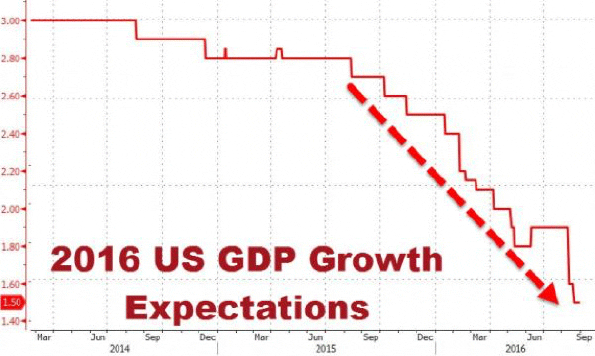Expectations for the next federal funds rate increase seem to change on a dime these days. Furthermore, it would seem by some that Federal Reserve Bank authority “media moments” only add to this uncertainty as they often seem to flip from day to day and depending on which particular individal authority is talking. The Federal Reserve has been talking about higher rates now for several years. Last December they finally pulled the trigger and increased the Federal Funds rate target by 25 basis points and indicated four more increases were a good possibility in 2016. At the present, this now obviously seems overly ambitious as the first nine months of the year saw no further increases. However, given their guidance during the past several years, should we really be surprised? The direction given during the first half of 2016 changed to a much more gradual pace of increases. At the current moment, the Federal Reserve Bank has clearly indicated that another increase in December is certainly a possibility. Janet Yellen recently stated at the end of August that the rate hike case has now increased again in recent months. Yet again, haven’t we been hearing this record for years now?
What does the Federal Reserve currently think about current and future economic and inflation expectations in consideration of higher rates? During Janet Yellen’s August communication she indicated that “the U.S. economy was now nearing the Federal Reserve’s (FOMC) statutory goals of maximum employment and price stability.” Furthermore, she indicated that “the FOMC future expectation was for moderate growth in the economy, a labor market that continued to strengthen, and inflation rising to 2 percent over the next few years.” Sounds almost perfect, doesn’t it? It certainly sounds like the recipe for very gradual increases in interest rates over the next few years. However, at the September meeting, the FOMC downgraded the U.S. economy for the remainder of 2016 for a third time in 2016. Should you still believe a gradual pace of increases are coming over the next few years? It would certainly not be unreasonable to use this as your base case expectation, but as risk managers we all know that what the Federal Reserve’s FOMC has stated and expected (at least publicly) over the past several months and years has not always materialized. In addition, if this is your base case expectation, at what point do you change it if increases in the federal funds target rate continue to fail to materialize.
Outside of Federal Reserve communications, current economic growth overall could possibly be described as low to moderate at best. A closer look at components of economic growth this year would indicate a picture more aptly described as tepid economic growth with some concerning data points and a generally weakening bias. If one looked at GDP growth expectations over the past several months as shown below, you might find it difficult to reconcile the direction of this trend with the Federal Reserve’s rate increase expectations. Nonetheless, some economists and analysts expect GDP to pick up in 2017 and reverse the 2016 expectations directions below. This would certainly be more in alignment with the Federal Reserve’s slow pace interest rate increase path. To add further support to this scenario, the Atlanta Federal Reserve’s own GDPNow model is currently forecasting growth to pick up in the second half of the year. If this is the case then a resumption of rate increases would be much more likely.
Will this change direction soon and what if it doesn’t?
What if the recent weakening trend in economic data continues? Will the Federal Reserve continue to talk about the possibility of higher rates even if growth remains weak but positive? What will happen to the yield curve in any of these scenarios? Have yields bottomed or is there more room on the downside for lower yields if economic data continues to weaken? Given the yields we are seeing in other developed nations, the lower yield possibility may not be out of the realm of possibilities. The point of this review and these questions is not to add to the confusion, but to identify the alternatives to any base case scenario and manage risk accordingly. Given the interest rate uncertainty of the current times (both the FOMC directed Federal Funds target rate and longer term rates), acknowledging alternatives and there changing likelihoods to your base case scenario has possibly never been more important.

